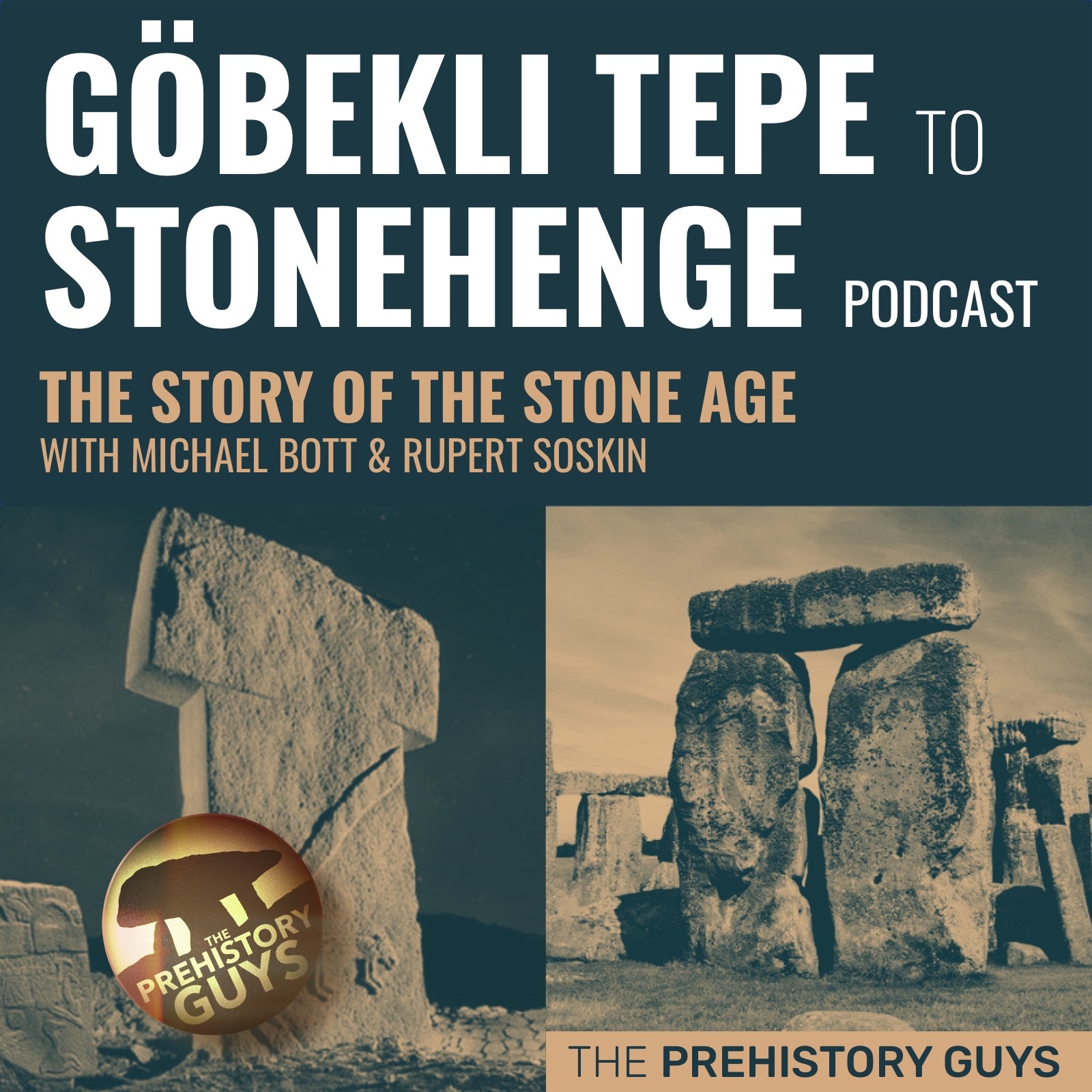Episodes
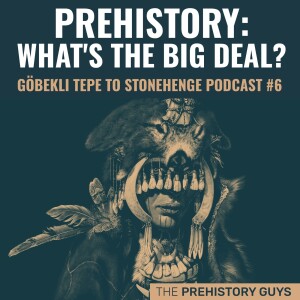
Wednesday Oct 30, 2024
Prehistory: What's the Big Deal?
Wednesday Oct 30, 2024
Wednesday Oct 30, 2024
Do we layer too much significance on people and things from prehistory and the past - simply because they are old? Do we confer special status on them in the absence of direct connection?
00:00 - Greetings & introduction
02:55 - A reverence for ‘things’ from the past
14:37 - A reverence for the people of the past
18:59 - Were people more spiritual in the past?
22:26 - William Stukeley’s legacy
26:53 - Making the past ordinary again!
30:40 - Exotic vs simple explanations
34:46 - Contingency and evolution vs intentional development
45:36 - The past as a mirror
WATCH ON YOUTUBE: https://youtu.be/i9GJZB08Bx8
🟡 Donate to the GÖBEKLI TEPE to STONEHENGE PROJECT here: https://www.buymeacoffee.com/prehistoryguys
🔴 Become a PATREON member here: https://www.patreon.com/theprehistoryguys
WEBSITE: https://theprehistoryguys.uk
Facebook: https://www.facebook.com/theprehistoryguys/
Twitter: https://twitter.com/prehistoryguys
Instagram: https://www.instagram.com/prehistoryguys
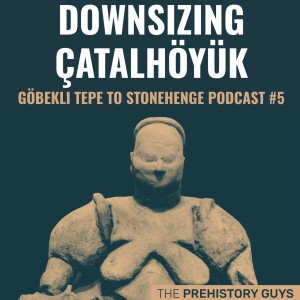
Tuesday Jun 04, 2024
Eye-opening study suggests Çatalhöyük population levels over-estimated
Tuesday Jun 04, 2024
Tuesday Jun 04, 2024
A new study out of Notre Dame University, Indiana has suggested that accepted estimations for population levels at Çatahöyük and other Neolithic villages in Anatolia may be grossly inflated.
In the past We have been told that Çatalhoyuk could have had up to 10,000 inhabitants at any one time - now this paper says maybe not so much. In fact, maybe less than 1,000 people lived there.
This is a pretty big deal and hopefully, we’ll be able to help explain why in the next forty minutes!
'How many people lived in the world’s earliest villages? Reconsidering community size and population pressure at Neolithic Çatalhöyük' available here: https://www.sciencedirect.com/science/article/abs/pii/S0278416524000047
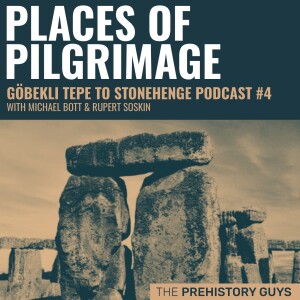
Wednesday Apr 03, 2024
WHY ARE THINGS WHERE THEY ARE? We explore some unusual perspectives.
Wednesday Apr 03, 2024
Wednesday Apr 03, 2024
Why do certain places take on significance in the human psyche? How do places of pilgrimage arise? Why are Göbekli Tepe, Stonehenge and other sites where they are?
We look at an aspect of human behaviour that is rarely taken into account when trying to explain what our ancestors were up to.
The Göbekli Tepe to Stonehenge Podcast is the place where we discuss matters of prehistory at a more conceptual and philosophical level, inspired by our research for the Göbekli Tepe to Stonehenge Project https://www.buymeacoffee.com/prehistoryguys (also see below).
00:00 - Intro & Overview
03:20 - Elephants, water & stone
06:41 - Testing the premise at Göbekli Tepe
14:09 - Testing the premise at Stonehenge
25:09 - Where are the places of pilgrimage in early Neolithic S.E. Europe?
30:57 - Crete & Knossos?
32:54 - Human imprinting: a useful perspective?
37:26 - Grime’s Graves, Mont Viso, the Langdale axe factcories
43:23 - Outro
Help us make our next film, GÖBEKLI TEPE to STONEHENGE at ...
🟡 BUY ME A COFFEE: https://www.buymeacoffee.com/prehistoryguys If you want to show some love to the Prehistory Guys but don't want the commitment of a monthly subscription (see Patreon link below), you can make a one off donation by following the link above. All single donations go to our current project: GÖBEKLI TEPE to STONEHENGE
🔴 PATREON: https://www.patreon.com/theprehistoryguys We have a friendly and enthusiastic Patreon community helping us create our content through monthly subscription. Get access to exclusive (ad-free!) content, be on the inside track of what we're up to and help us build the channel. WEBSITE:
https://theprehistoryguys.uk Facebook: https://www.facebook.com/theprehistoryguys/ Twitter: https://twitter.com/prehistoryguys Instagram: https://www.instagram.com/prehistoryguys
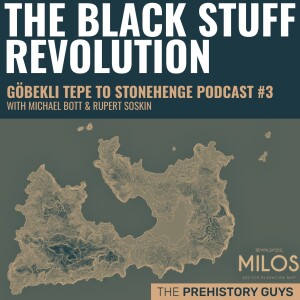
Wednesday Mar 06, 2024
Obsidian - Black Stuff Revolution
Wednesday Mar 06, 2024
Wednesday Mar 06, 2024
In the process of developing and making Göbekli Tepe to Stonehenge, we're lifting the corner of the carpet on all sorts of aspects to do with the Neolithic period that we perhaps would not have otherwise.
And so it is with the topic of this discussion - obsidian: we had absolutely no idea how crucial this 'black stuff' was to the spread of farming from Anatolia and the fertile crescent into Europe until really examining the narrative of how the early pioneers first ventured out in to the Aegean and crossed to mainland Greece.
Our research has turned up all sorts of surprises and we hope you all enjoy this brief overview of the power of the trade in obsidian.
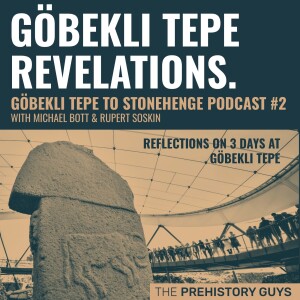
Sunday Dec 10, 2023
GÖBEKLI TEPE REVELATIONS: Thoughts on 3 days at Göbekli Tepe.
Sunday Dec 10, 2023
Sunday Dec 10, 2023
As the first steps in making the Göbekli Tepe to Stonehenge film project, a few weeks ago Rupert and I spent three days at Göbekli Tepe with access to the whole site - we've been down amongst the T-pillars, we've seen the places where the people lived, we've seen excavations that are normally out of the public eye and much more - all in the company of the head archaeologist there, Lee Clare.
So that is what this show about: we so had our minds blown during our visit, we've got so much to talk about, and this is the first opportunity - probably the first of many - to share what we've taken away from our visit.
Help us make our film series, GÖBEKLI TEPE to STONEHENGE at ...
🟡 BUY ME A COFFEE: https://www.buymeacoffee.com/prehistoryguys
If you want to show some love to the Prehistory Guys but don't want the commitment of a monthly subscription (see Patreon link below), you can make a one off donation by following the link above. All single donations go to our current project: GÖBEKLI TEPE to STONEHENGE
🔴 PATREON: https://www.patreon.com/theprehistoryguys
We have a friendly and enthusiastic Patreon community helping us create our content through monthly subscription. Get access to exclusive (ad-free!) content, be on the inside track of what we're up to and help us build the channel.
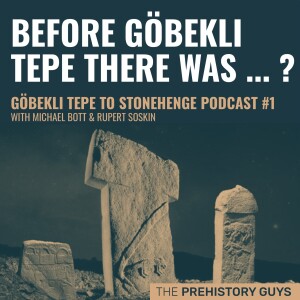
Thursday Oct 26, 2023
Before Göbekli Tepe there was ... ?
Thursday Oct 26, 2023
Thursday Oct 26, 2023
In the very first 'Göbekli Tepe to Stonehenge' podcast, we aim to provide a context for the phenomenon of the T-Pillar sites of South Eastern Turkïye and to set the scene for the journey we are about to embark upon with the whole Göbekli Tepe to Stonehenge film project,
In order to fulfil the promise of the project our prehistory focus has shifted over to the Levant and the Fertile Crescent. And our tiny minds have been a little bit blown just a bit.
We've never accepted the idea of Göbekli Tepe as this 'Ground Zero' of civilization as it presents in the popular press and now largely in the public imagination, or even worse, that it must have been constructed by aliens (how could hunter-gatherers have made THAT?).
But of course, there is a story that leads up to Göbekli Tepe, the other Taş Tepeler (stone hills) and other sites; one that stretches back a further 10,000 years, right to the shores of the Sea of Galilee.
We hope you enjoy this condensed overview of what came before Göbekli Tepe.
00:00:00 - Intro & show outline
00:04:24 - Why the Göbekli Tepe to Stonehenge podcast?
00:10:46 - It didn’t all start with Göbekli Tepe
00:15:59 - Ohalo II
00:20:00 - The Epipaleolithic
00:23:18 - Archaeological sites of the area
00:26:05 - Zarzian Culture
00:27:04 - Available information about the Epipaleolithic
00:29:47 - Kharaheneh IV
00:32:58 - Natufian Culture
00:39:51 - Bread & beer?
00:43:27 - More about the Natufians
00:45:23 - Halizon Tachtit
00:47:04 - Tortoises
00:49:54 - The Younger Dryas
00:55:22 - Special buildings, silo storage and the Tas Tepeler sites
00:58:32 - Göbekli Tepe precursor sites
01:03:45 - Desert kItes and the hunting of gazelle
01:06:40 - Rounding up & goodbyes
For those of you who would like to take a closer look at some of the sites we discussed in the podcast, below is a list of some of the key settlements.
Ohalo II, northern Israel.
A 22,000 year-old site that was discovered when sea of Galilee dried to a very low level in 1989
The small settlement of oval houses also contained a single burial of a male between 35-40 years old
Due to the waterlogged conditions there was an unusually high level of preservation. Thousands of seeds and fruits showing that these people exploited over 100 different plant species with evidence that they lived there all year round.
https://en.wikipedia.org/wiki/Ohalo_II
Kharaneh IV, Jordan
The site’s main period of occupation was 21,000 to 18,500 years ago.
Traces of stone foundations for round huts - more widely known as hut circles.
Over time the site developed into a low mound covering over two hectares or five and a half acres.
The surface was littered with literally millions of discarded flints.
Also interesting here is that these people apparently socialised in some way with other more distant groups. archaeologists have also found beads here made from marine shells which came from the mediterranean and the red sea - which are 125 and 250 miles away respectively.
https://en.wikipedia.org/wiki/Kharaneh_IV
El Wad, Mount Carmel, northern Israel
A cave settlement dating to around 14,500 years ago. As the community grew in size, the area outside the cave was terraced to allow the building of circular stone huts with paved floors.
It was the excavations at El Wad in the 1920s that prompted Dorothy Garrod to name these people the Natufians after recognising similarities between the stone tools found at El Wad and her previous excavations at Shuqba cave near Wadi en-Natuf.
Interesting that excavations have shown that some Natufian graves were reopened specifically to remove the skull of the deceased
https://en.wikipedia.org/wiki/El_Wad
Tel Abu Hureyra - northern Syria
Established about 13,000 years ago but abandoned before the end of the younger dryas. Then reoccupied around 10,800 years ago.
The site is significant because the inhabitants of Abu Hureyra started out as hunter-gatherers but gradually moved to farming, making them the earliest known farmers in the world. Cultivation started at the beginning of the Younger Dryas period and evidence uncovered at Abu Hureyra suggests that rye was the first cereal crop to be systematically cultivated. In light of this, it is now believed that the first systematic cultivation of cereal crops was around 13,000 years ago
https://en.wikipedia.org/wiki/Tell_Abu_Hureyra
Hilazon Tachtit, Western Galilee, Israel.
Hilazon Tachtit Cave is a burial ground from the Late Natufian culture (12,000-12,400 cal BP). It is located on the northern bank of the Hilazon stream in the western Galilee in Israel. The Late Natufian layer was revealed in the central area of the cave, in a depression in the bedrock. The site was excavated between 1997-2008 by Professor Leore Grosman.
The cave served as a burial ground for at least 28 individuals, of all ages. The majority of the burials are found within three pits, which served as collective burial places; two burials were interred in structures which were excavated into the bedrock, and one other individual was buried on the high ground between the two structures. These last three burials were fully articulated, while the burials in the pits were buried whole, but at a later time, the pits were opened, and the long bones and skulls were removed.
One particularly noteworthy burial is that of an elderly woman with congenital and age-related deformities. Amongst numerous other burial goods, her grave contained a lot of animal remains including at least 50 complete tortoise shells. Other fragments suggest there could have been as many as 90 tortoises in total. Her grave also contained another human foot.
https://archaeology.huji.ac.il/hilazon-tachtit-cave
Help us make our next film, GÖBEKLI TEPE to STONEHENGE at ...
🟡 BUY ME A COFFEE: https://www.buymeacoffee.com/prehistoryguys
If you want to show some love to the Prehistory Guys but don't want the commitment of a monthly subscription (see Patreon link below), you can make a one off donation by following the link above. All single donations go to our current project: GÖBEKLI TEPE to STONEHENGE
🔴 PATREON: https://www.patreon.com/theprehistoryguys
We have a friendly and enthusiastic Patreon community helping us create our content through monthly subscription. Get access to exclusive (ad-free!) content, be on the inside track of what we're up to and help us build the channel.
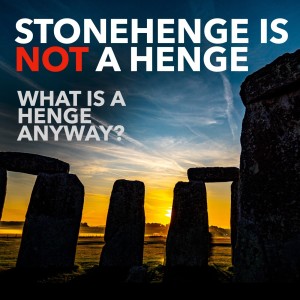
Wednesday Nov 30, 2022
Why Stonehenge isn’t a henge and what is a henge anyway?
Wednesday Nov 30, 2022
Wednesday Nov 30, 2022
Every week we make an exclusive short podcast for our Patreon supporters called 'The Monday Moot'. It's a kind of a sandbox where we air our thoughts on aspects of prehistoric archaeology.
Sometimes, those thoughts become worthy topics for a wider audience and this is one of those instances. Here, Michael & Rupert ask if the word 'henge' has an impact on the way we view our circular earthworks in the UK.
KENNY BROPHY INTERVIEW: https://youtu.be/f6yQcGzqccg

Wednesday Nov 30, 2022
WERE MEN MAKING THE POTTERY AT THE NESS?
Wednesday Nov 30, 2022
Wednesday Nov 30, 2022
We take you to The Scottish Isles, Bohemia and South Carolina!
More fingerprints on pottery have been found at the Ness of Brodgar and it turns out that they all belong to young adult men and that the most recent print to be found belonged to a thirteen year old boy!
A team of archaeologists from the University of West Bohemia in Pilsen have discovered a long barrow, built around 3,800BC on the legendary Říp Mountain in the Czech Republic.
Machine learning and Artificial Intelligence applied to LIDAR technology has led to the discovery of ancient Shell Rings on Daws Island, South Carolina.
00:00 - Intro & Titles
00:23 - Ness of Brodgar Fingerprints
04:23 - A Long Barrow in the Czech Republic
09:27 - Patreon/Buy Me a Coffee appeal
10:56 - Shell Rings, machine learning and A.I.
15:30 - Finishing up
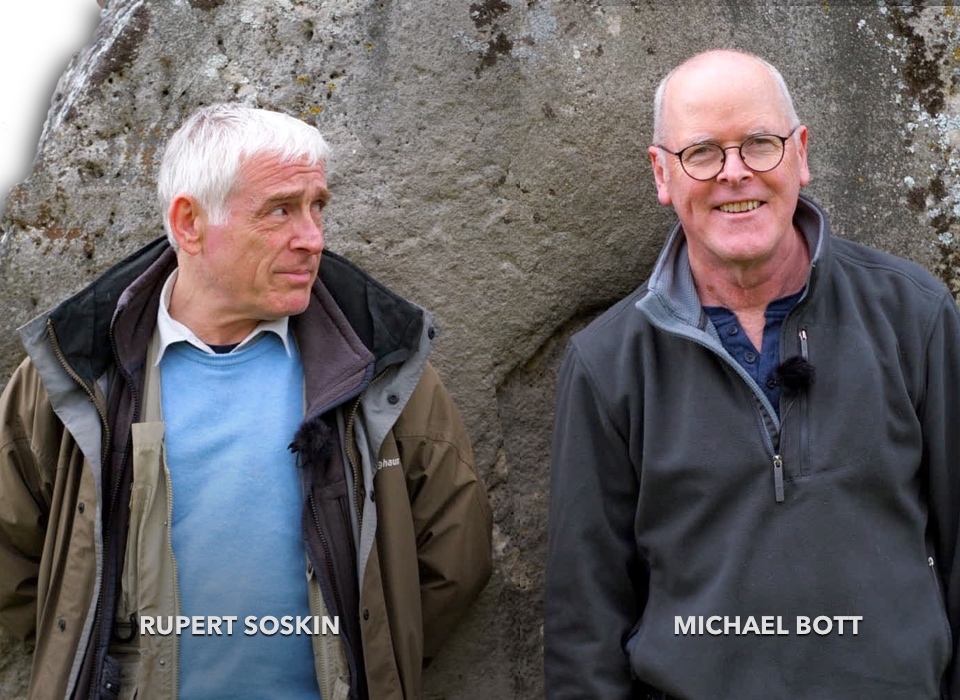
The Prehistory Guys
In a nutshell: We dig deeper so you don’t have to. News, views, podcasts & films connecting you the world of prehistoric archaeology.
It's over fourteen years since we produced our epic film 'Standing with Stones', but in the last couple of years we've been expanding the range of our output to include podcasts, short films and live shows. We've also been expanding our reach into the academic archaeological community. This means we can bring you the very latest research into and thinking about our ancient past, in an entertaining and varied way.

